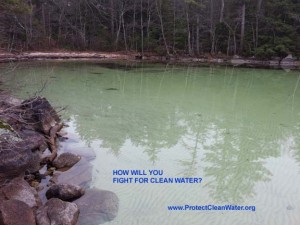
The Clean Water Act turns 42 on Saturday. To celebrate we'll be sharing reflections on the Act, talking about the fight to protect clean water, and discussing what we can all do to put drinking water first.
Four More Clean Water Act Facts (part 2 of 2) -- Learn these and you’ll be an expert
by Jonathan A. Scott, a member of Clean Water Action's development and communications teams, @jscottnh
FACT #9: Some of the main Clean Water Act tools responsible for most of the progress cleaning up and protecting water include:
- A national permitting system, administered by the states, to regulate discharges into waterways called the National Pollutant Discharge Elimination System (NPDES)
- Special protections requiring review and permitting for development projects that disturb or destroy wetlands, the “Section 404” program which provides citizens a critical point of access to decisions affecting their water.
- Funding – initially a mix of grants and loans, now primarily loans – for state and community investments in modern sewage treatment plants and other water cleanup infrastructure.
- More federal funding comes to states, mainly as grants, to implement and enforce various Clean Water Act programs.
- Citizen suit provisions in the law specifically designed to allow citizens and nonprofits to intervene and make sure the law is properly implemented and enforced.
The referenced media source is missing and needs to be re-embedded.
Now is the time to get this fundamental clean water job done. Especially today, on the eve of the Clean Water Act's birthday, we can't allow the voices of the majority of Americans who care about their water and want to see it protected be drowned out by the narrow interests of polluters and their allies in Congress. Make your voice heard now, at www.ProtectCleanWater.org Related Posts
Stay Informed
Get the latest updates and actions:
Thanks for signing up!
There was a problem processing your signup. Please try again.


